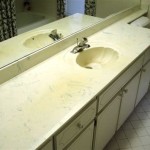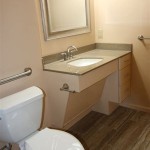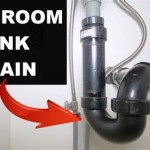Bathroom Fan Vent Gable End
Proper ventilation is crucial for maintaining a healthy and comfortable bathroom environment. Excessive moisture buildup can lead to mold, mildew, and structural damage. Venting a bathroom fan through a gable end is a common practice that offers a straightforward and efficient way to exhaust moist air outdoors. This article explores the process and considerations involved in installing a bathroom fan vent through a gable end.
Key Considerations for Gable End Venting
Several factors should be considered before installing a gable end vent:
- Local Building Codes: Adherence to local building codes and regulations is paramount. These codes dictate specific requirements for vent installation, including size, location, and materials. Consulting local building codes is the first step in planning the installation.
- Roof Pitch and Structure: The roof's pitch and underlying structure influence vent placement and the type of vent cap required. Steep roofs may necessitate specialized flashing and vent caps designed for angled installations.
- Aesthetics: While functionality is primary, the vent's visual impact on the home's exterior should be considered. Selecting a vent cap that complements the home's architecture and color scheme can enhance curb appeal.
Vent Cap Selection and Installation
Choosing the correct vent cap is crucial for effective ventilation and weather protection.
- Material: Vent caps are available in various materials, including plastic, aluminum, and galvanized steel. Galvanized steel offers superior durability and resistance to corrosion, while plastic provides a cost-effective option.
- Style: Different vent cap styles are designed for varying roof pitches and aesthetic preferences. Low-profile vent caps are suitable for shallow roofs, while hooded vents offer enhanced protection against rain and snow.
- Insect and Animal Protection: Vent caps should include screens or mesh to prevent insects and animals from entering the vent system and nesting within the ductwork.
Ductwork Installation for Optimal Airflow
Proper ductwork installation is essential for maximizing airflow and minimizing noise.
- Duct Material: Rigid metal or smooth-walled PVC ducting is recommended for bathroom exhaust vents. These materials minimize air resistance and prevent moisture buildup within the ductwork. Flexible ducting should be avoided, as it is prone to sagging and accumulating condensation.
- Duct Size: The duct size should correspond to the bathroom fan's CFM (cubic feet per minute) rating. Using a duct that is too small will restrict airflow and reduce the fan's efficiency. Consult the fan manufacturer's specifications for the recommended duct size.
- Insulation: Insulating the ductwork, especially in colder climates, prevents condensation and heat loss. Insulated ductwork also reduces noise transmission.
- Minimal Bends: The duct run should be as straight as possible to minimize air resistance. Each bend in the ductwork reduces airflow, so minimizing the number of bends is critical for optimal performance.
Exterior Wall Penetration and Sealing
Properly sealing the vent penetration through the gable end is crucial for preventing water intrusion and maintaining energy efficiency.
- Cutting the Opening: Carefully measure and mark the location for the vent opening on the gable end. Use a hole saw or reciprocating saw to create a clean, precise opening that is slightly larger than the duct diameter.
- Flashing: Proper flashing around the vent penetration is essential for preventing water leaks. Use high-quality flashing material that is compatible with the roofing material and securely seal all seams and joints with sealant.
- Caulking: Seal any gaps between the vent cap and the siding or roofing material with a weather-resistant caulk to prevent air leaks and water intrusion.
Wiring and Electrical Connections
Connecting the bathroom fan to the electrical system requires careful attention to safety and code compliance.
- Dedicated Circuit: Bathroom exhaust fans should be connected to a dedicated circuit to prevent overloading and ensure safe operation.
- GFCI Protection: A Ground Fault Circuit Interrupter (GFCI) outlet should be used to protect against electrical shock, particularly in damp environments like bathrooms.
- Wiring Connections: All wiring connections should be made inside a weatherproof junction box located within the attic or crawl space. Use wire nuts and electrical tape to secure and insulate all connections.
Maintenance and Inspection
Regular maintenance ensures the continued effectiveness of the bathroom exhaust fan.
- Cleaning the Vent Cap: Periodically clean the vent cap to remove debris and ensure proper airflow. Leaves, twigs, and other debris can obstruct the vent and reduce the fan's efficiency.
- Inspecting the Ductwork: Inspect the ductwork for any signs of damage, leaks, or condensation buildup. Repair or replace any damaged ductwork to maintain optimal performance.
- Testing the Fan: Regularly test the fan to ensure it is operating correctly. Listen for unusual noises or vibrations that may indicate a problem with the motor or fan blades.
By following these guidelines and adhering to local building codes, a homeowner can effectively vent a bathroom fan through a gable end, creating a healthier and more comfortable living environment.

Bathroom Vent Piping To Near Exterior Inspecting Hvac Systems Internachi Forum

Exhaust Fan Internachi Forum

Venting A Bath Fan In Cold Climate Fine Homebuilding

Gable End Vent Thisiscarpentry

How To Vent Bathroom Fan Through Gable A Complete Guide Homes Valy
Is This An Acceptable Way To Vent Bath Fan Out Gable Diy Home Improvement Forum

Best Practices Bathroom Venting Greenbuildingadvisor

Radiant Barrier Vs Attic Exhaust Fan Greenbuildingadvisor

Cincinnati Nky Louisville Roof Ventilation Deer Park Roofing Llc

Attic Ventilation Guide Homeserve Usa
Related Posts







